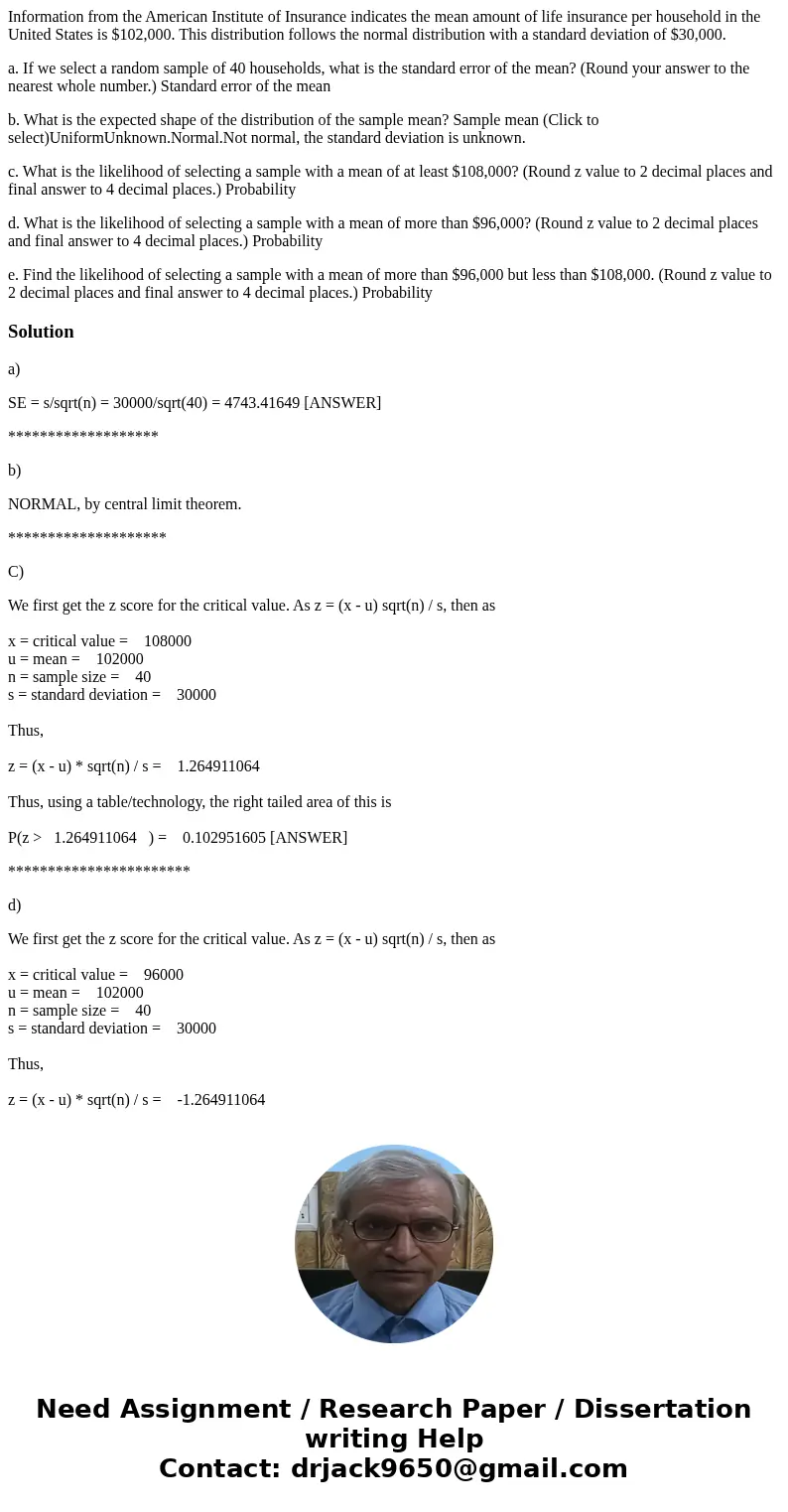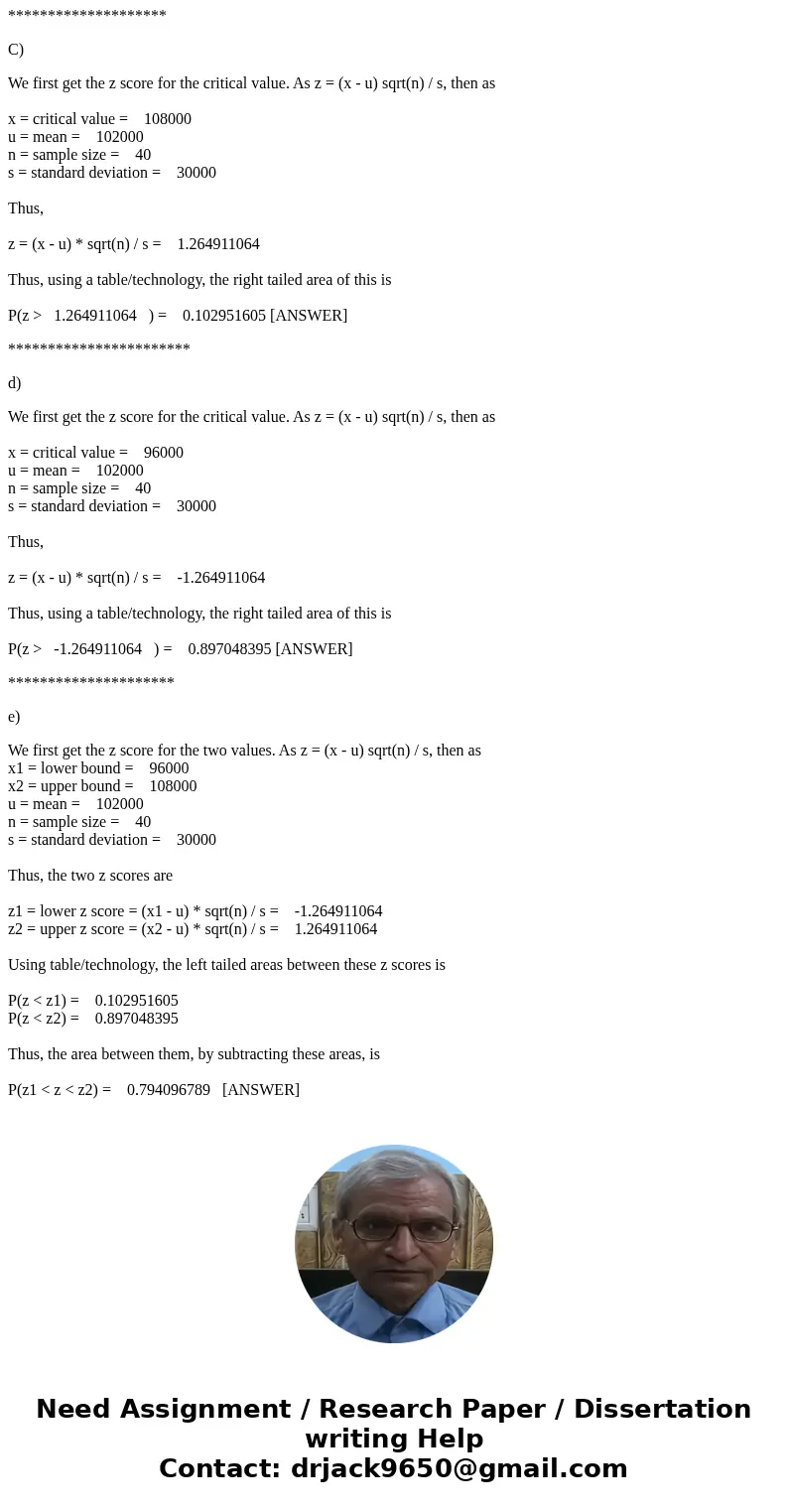Information from the American Institute of Insurance indicat
Information from the American Institute of Insurance indicates the mean amount of life insurance per household in the United States is $102,000. This distribution follows the normal distribution with a standard deviation of $30,000.
a. If we select a random sample of 40 households, what is the standard error of the mean? (Round your answer to the nearest whole number.) Standard error of the mean
b. What is the expected shape of the distribution of the sample mean? Sample mean (Click to select)UniformUnknown.Normal.Not normal, the standard deviation is unknown.
c. What is the likelihood of selecting a sample with a mean of at least $108,000? (Round z value to 2 decimal places and final answer to 4 decimal places.) Probability
d. What is the likelihood of selecting a sample with a mean of more than $96,000? (Round z value to 2 decimal places and final answer to 4 decimal places.) Probability
e. Find the likelihood of selecting a sample with a mean of more than $96,000 but less than $108,000. (Round z value to 2 decimal places and final answer to 4 decimal places.) Probability
Solution
a)
SE = s/sqrt(n) = 30000/sqrt(40) = 4743.41649 [ANSWER]
*******************
b)
NORMAL, by central limit theorem.
********************
C)
We first get the z score for the critical value. As z = (x - u) sqrt(n) / s, then as
x = critical value = 108000
u = mean = 102000
n = sample size = 40
s = standard deviation = 30000
Thus,
z = (x - u) * sqrt(n) / s = 1.264911064
Thus, using a table/technology, the right tailed area of this is
P(z > 1.264911064 ) = 0.102951605 [ANSWER]
***********************
d)
We first get the z score for the critical value. As z = (x - u) sqrt(n) / s, then as
x = critical value = 96000
u = mean = 102000
n = sample size = 40
s = standard deviation = 30000
Thus,
z = (x - u) * sqrt(n) / s = -1.264911064
Thus, using a table/technology, the right tailed area of this is
P(z > -1.264911064 ) = 0.897048395 [ANSWER]
*********************
e)
We first get the z score for the two values. As z = (x - u) sqrt(n) / s, then as
x1 = lower bound = 96000
x2 = upper bound = 108000
u = mean = 102000
n = sample size = 40
s = standard deviation = 30000
Thus, the two z scores are
z1 = lower z score = (x1 - u) * sqrt(n) / s = -1.264911064
z2 = upper z score = (x2 - u) * sqrt(n) / s = 1.264911064
Using table/technology, the left tailed areas between these z scores is
P(z < z1) = 0.102951605
P(z < z2) = 0.897048395
Thus, the area between them, by subtracting these areas, is
P(z1 < z < z2) = 0.794096789 [ANSWER]


 Homework Sourse
Homework Sourse